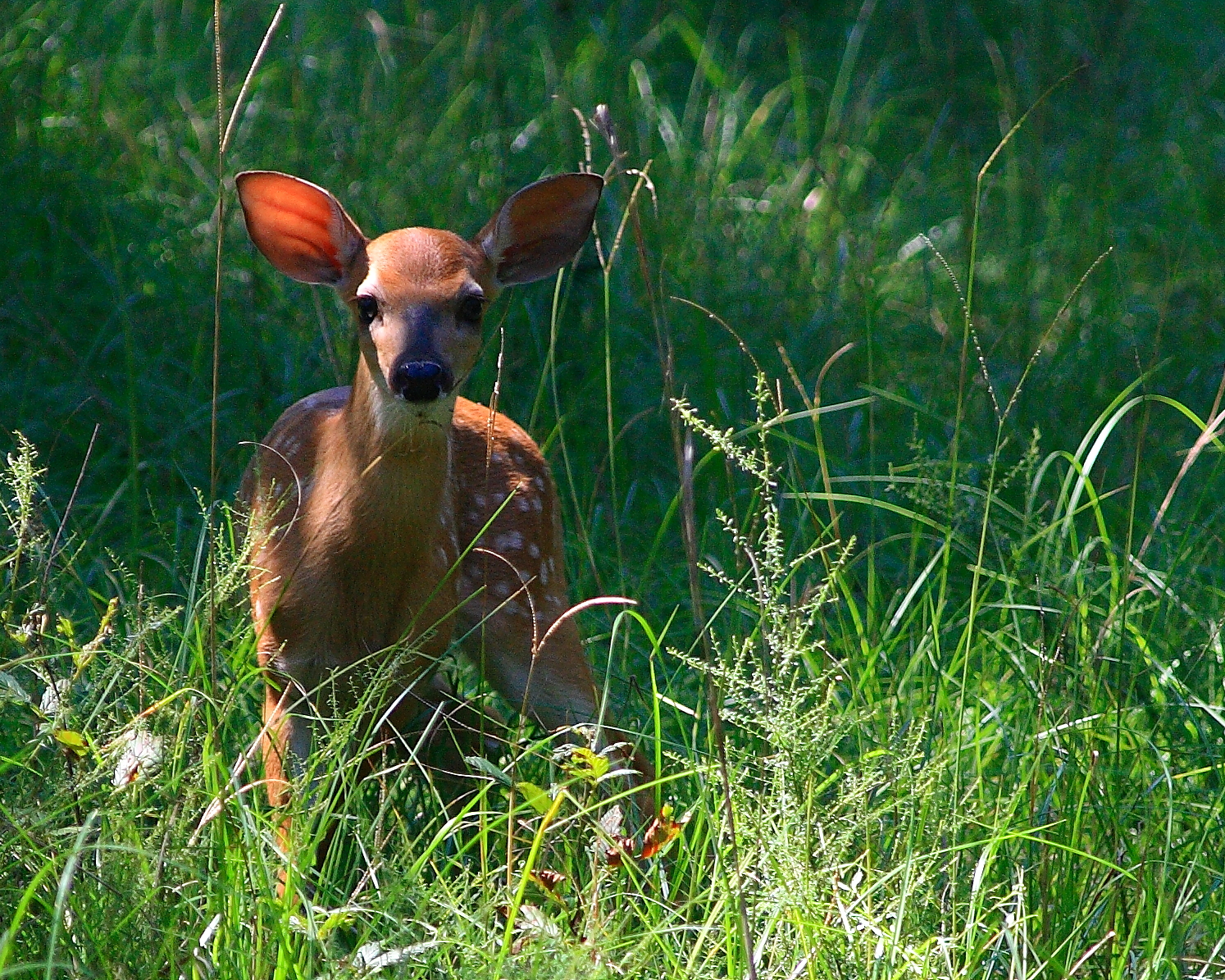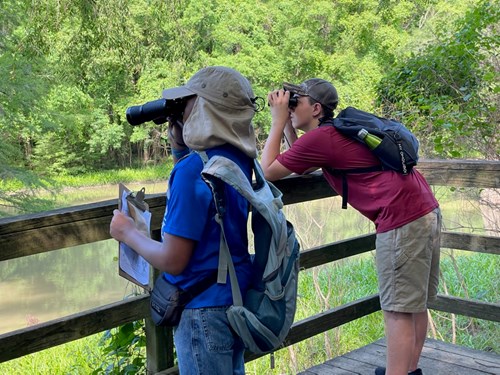
If you have questions about purchasing a license call 1-800-5GO-HUNT.
In addition to hunting opportunities, Mississippi's WMAs have evolved to support many other initiatives: wildlife habitat preservation, conservation and education efforts, recreation, and more. And all of these roles must be balanced to protect and preserve Mississippi's wildlife resources.
By Randy Spencer
The Mississippi Wildlife Management Area (WMA) system is expansive and diverse. It includes 54 areas encompassing over 665,000 acres. That is over 1,000 square miles! WMAs occur across the eight major physiographic regions of the state. They reach all the way from the upper edge of the coastal marshes in Jackson County to the lower reaches of the Appalachians in Tishomingo County. They range from the rolling hardwood hills of southwestern Mississippi to the deep, rich soils of the Delta. Some WMAs are owned by the MDWFP. Many are managed under memoranda of understanding with the U.S. Forest Service or private corporations. Others are operated through long-term license agreements with the Corps of Engineers.
 When most Mississippians think of our WMAs, they think of them primarily as public hunting areas. That is not surprising or inappropriate because public hunting does, indeed, constitute the largest single use of WMAs. But such has not always been the case. In fact, in the humble beginnings of the WMA system, just the opposite was true. The forerunners of our modern WMAs prohibited hunting entirely. In an era of decimated habitat and wildlife populations in the 1930s, complete protection was necessary to reverse the decline. In 1939, the Leaf River Refuge was established by building a 1,300 acre fenced enclosure for the purpose of allowing deer populations to recover. As this was occurring, habitat around the state was also beginning to recover and enforcement of game laws was improving. Deer were then trapped from Leaf River, and other refuges, and translocated across the state to stock areas of suitable habitat that no longer had viable populations. Over the decades, these refuges evolved into what we now know as WMAs.
When most Mississippians think of our WMAs, they think of them primarily as public hunting areas. That is not surprising or inappropriate because public hunting does, indeed, constitute the largest single use of WMAs. But such has not always been the case. In fact, in the humble beginnings of the WMA system, just the opposite was true. The forerunners of our modern WMAs prohibited hunting entirely. In an era of decimated habitat and wildlife populations in the 1930s, complete protection was necessary to reverse the decline. In 1939, the Leaf River Refuge was established by building a 1,300 acre fenced enclosure for the purpose of allowing deer populations to recover. As this was occurring, habitat around the state was also beginning to recover and enforcement of game laws was improving. Deer were then trapped from Leaf River, and other refuges, and translocated across the state to stock areas of suitable habitat that no longer had viable populations. Over the decades, these refuges evolved into what we now know as WMAs.
Thanks to numerous such restoration and protection projects in our agency's history, we now can offer many and varied hunting opportunities on our WMAs. While deer hunting is the leading use, at over half of the annual total, there are many other resident and migratory game species available to pursue. Wild turkey, squirrel, rabbit, quail, raccoon, opossum, fox, and bobcat are among the resident species traditionally hunted on our WMAs. Ducks, geese, and doves are the most commonly hunted migratory species, but several other migratory game birds may be taken, too. Wild hogs have proliferated and spread throughout the state, including WMAs, in recent years. Hunting of this nuisance species, which has detrimental impacts on so many game and non-game species, is also offered on areas where they occur. Most recently, even alligator hunting was added to the list of opportunities when the state's first ever season was held in September 2005 on Pearl River WMA.
Today's WMAs serve many other roles in addition to public hunting. The common link among all WMAs is that they provide habitat for wildlife, game and non-game species alike. In certain locations they even lend themselves well to management for threatened and endangered species, such as the gopher tortoise, yellow-blotched sawback turtle, and red-cockaded woodpecker. The ability to enhance habitats and regulate public use makes WMAs vitally important for maintaining species of special concern.
We can also apply sound management principles and techniques on WMAs in order to demonstrate to landowners and the general public how to improve wildlife populations and habitat. It is far more meaningful for most people to see how a prescribed burn, a moist-soil impoundment, or a timber stand improvement cut can enhance habitat, rather than to just read about it. It is easier to teach someone by showing how a regulation that promotes an older age class of bucks can improve quality than to merely tell them it does. The demonstration function of WMAs is an invaluable educational tool.
 Frequently, WMAs are the study sites for wildlife research projects designed by our technical staff to find answers to important management questions. The ability that we have to adjust regulations and even make habitat alterations to accommodate study design makes WMAs the logical place for these important efforts. Much of what we know about applied habitat and population management in Mississippi, and even basic ecology of some species, was learned on our WMAs.
Frequently, WMAs are the study sites for wildlife research projects designed by our technical staff to find answers to important management questions. The ability that we have to adjust regulations and even make habitat alterations to accommodate study design makes WMAs the logical place for these important efforts. Much of what we know about applied habitat and population management in Mississippi, and even basic ecology of some species, was learned on our WMAs.
Over the past two or three decades, wildlife viewing has become more important to all Americans, both hunters and non-hunters. The opportunity to view wild animals in their natural habitat is so ingrained in our society that it is considered a quality of life issue. In Mississippi, much of that opportunity is provided on WMAs. If you pick up a Mississippi Wildlife Viewing Guide or an Important Birding Areas of Mississippi publication, you will see numerous references to individual WMAs and the species you might find there.
Fishing, primitive camping, and hiking are also available on many of our WMAs. The list of options for uses of these areas goes on and on. The ones discussed so far are relatively low impact, but the demand for space to pursue many outdoor recreational interests keeps increasing in quantity and potential impacts. Horseback riders want trails, various field trial enthusiasts seek developed courses, and all terrain vehicle riders are looking for trails--or even places to "mud ride"--on WMAs. As the potential for negative impacts to area resources increases, our ability to provide opportunity lessens. Every decision made by our agency relative to public use of wildlife and fisheries resources must be evaluated, at the most basic level, on whether or not we can provide the opportunity within the limits of the resource. Other factors, of course, have to be considered, such as potential user group conflicts. But the limits of the resource, which may be affected by possible impacts on wildlife populations, vegetative habitat components, water quality, and even the soil, must be the primary consideration. While our WMAs do, indeed, have something for almost everyone, they cannot be all things to all people. We are ultimately responsible for protecting the public's wildlife resources, so there must be limits on recreational opportunities we can offer.